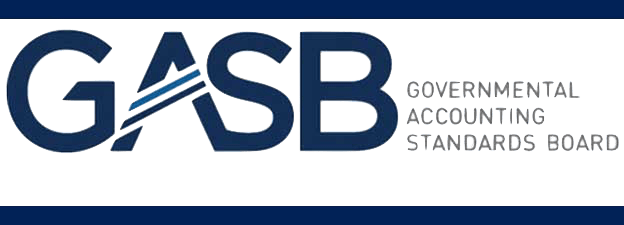






At AppraiseItNow, we’re proud to highlight appraisers who embody the rigor and integrity that define our field. In this interview, we spoke with Ashley, a USPAP-compliant personal property appraiser and Accredited Member of the International Society of Appraisers (ISA), whose specialties include Asian antiques and musical instruments.
Ashley shares how her background in art history and musicology shaped her path to appraisal, what it takes to maintain full USPAP compliance, and how organizations like ISA, ASA, and AAA help uphold professional standards worldwide. She also offers valuable advice for first-time clients — including what to look for (and avoid) when hiring an appraiser, and why compliance and transparency matter more than ever.
Whether you’re an aspiring appraiser or a client seeking a credible valuation, Ashley’s perspective offers a rare inside look at the standards, complexities, and human side of the appraisal profession.
Before becoming a USPAP-compliant personal property appraiser, I studied musicology and Asian art history at university. My two primary specialties as an appraiser are Asian antiques and musical instruments, so these subjects came in handy! I began my career as a cataloguer and provenance researcher before transitioning to appraisals.
I was very fortunate that appraisals found me. When I was at university and at the beginning of my career, I assumed my long-term goals included becoming a gallerist or auctioneer. While I do still work with galleries and auction houses, it’s now as an appraiser or advisor. I was first exposed to the appraisal field as an assistant appraiser while doing gallery work and really enjoyed it, so I decided to become USPAP-compliant myself.
It was a very natural transition for me. I am grateful to have gained the educational and work experience for a few years first, which served as a solid foundation for my appraisal career. I am an Accredited Appraiser with the International Society of Appraisers (ISA), and their educational programs were rigorous but rewarding.
I have two university degrees in art history and musicology each. I also took ISA’s Core Course, which is mandatory for all ISA appraisers. After this, I took the 15-hour USPAP course with ISA. Every two years I renew my USPAP compliance by retaking the mandatory 7-hour USPAP course, which teaches us updates in guidance from the Appraisal Foundation.
I have been with ISA since 2021 and am currently a candidate member at ASA. I have wonderful colleagues across all three organizations, which are very similar in their educational standards and are of course all USPAP-compliant. I joined ISA due to its increased international presence, since I primarily work between the US and the UK.
I perform many types of appraisals, but see the most demand for non-cash charitable donations, insurance, and financial planning. For generalist or musical instrument appraisals, the distribution is more even. For Asian art appraisals, clients often engage me because they need assistance identifying the items and deciding what to do with them, so while I perform all types of appraisals for Asian art, I see more financial planning appraisals as a specialist than I do as a generalist.
I trained at university as a Buddhist specialist, so I have a soft spot for any type of antique Buddhist sculpture. These tend to be from China, Southeast Asia, or India. My favorite figure is Guanyin, the bodhisattva of compassion. I get excited when I encounter her on projects, even if the object isn’t worth very much!
I don’t have a single favorite object, as I’ve been fortunate to work on many interesting projects, but earlier this year I appraised a substantial private collection of Bencharong and Lai Nam Thong porcelain, which well could be the largest outside of Asia. I have always felt that Bencharong carries historical significance that is often overlooked.
For North American clients, don’t engage an appraiser unless they are USPAP-compliant, which includes having taken the USPAP 7-hour course within the previous two years. Appraisers whose USPAP courses are out of date are no longer USPAP-compliant, and they therefore might be missing essential appraisal practice updates, which could prove costly to the client in the long run.
Appraisers have long performed remote appraisals, but the pandemic helped normalize them for clients. Many clients mistakenly assume that remote appraisals are not USPAP-compliant, but they are if the client takes care to provide the necessary information and the appraiser includes the appropriate extraordinary assumptions in the report.
As an Asian art specialist, I frequently perform remote appraisals, as we are few and far between, so in-person appraisals are not an option for many clients outside of major Asian art hubs such as New York, London, or Paris. I am frequently contacted by generalist appraisers searching for assistance with Asian art objects, which might not be available in person in their area. Remote appraisals can be a practical and cost-effective solution for many types of appraisals, as the client takes the photographs and provides necessary information (dimensions, condition notes, etc.) that the appraiser otherwise would have spent time gathering.
USPAP (Uniform Standards of Professional Appraisal Practice) sets the ethical and performance standards for appraisal practice in the U.S. across disciplines, including personal property. While not law in most personal property contexts, many clients and institutions (insurers, museums, charities, etc.) require USPAP-compliant reports. For IRS non-cash charitable contributions, the law requires a qualified appraisal prepared by a qualified appraiser; USPAP compliance is widely recognized as best practice and strong evidence that these standards are met.
This question deserves its own article! There are multiple definitions for each depending on the context, but in a nutshell, ISA defines FMV as “the most probable price at which property would change hands between a willing buyer and a willing seller, neither being under any compulsion to buy or to sell, both having reasonable knowledge of all relevant facts, and with the sale being made to the public in the most relevant market, taking into consideration the location of the property.”
FMV is used for non-cash charitable donations, estate appraisals, equitable distribution appraisals, etc. Replacement costs quantify the amount needed for an equivalent item and are used more for insurance. USPAP and the ISA Core Course Manual have much more thorough explanations of these definitions and their applications.
The appraisal field in the US is far more standardized and streamlined for both the appraiser and client than in Europe, largely due to USPAP, the Appraisal Foundation, and the three main appraisal societies (ISA, ASA, and AAA). My experience has been that American clients and fellow arts professionals also have a better understanding of what the profession entails. It is a far more rigorous process to become a qualified appraiser in the US, but the result is improved transparency and time efficiency. Groups like ISA are also fantastic resources for appraisers to collaborate and learn from each other.
Ashley Innes is an experienced Asian art specialist and provenance researcher. Her specialties include Buddhist antiques, ceramics, Indian miniature paintings, and musical instruments. Originally from San Francisco, she now spends her time between the US and London.
Ashley holds two degrees in Asian art history from the School of Oriental and African Studies, University of London, both with high distinction. Previously, she earned degrees in musicology at Scripps College and Christ Church, University of Oxford. She is an Accredited Member of the International Society of Appraisers, is the chair of ISA’s Antiques, Furniture, and Decorative Arts Committee (AFDA), and serves on ISA’s annual Conference Committee.




